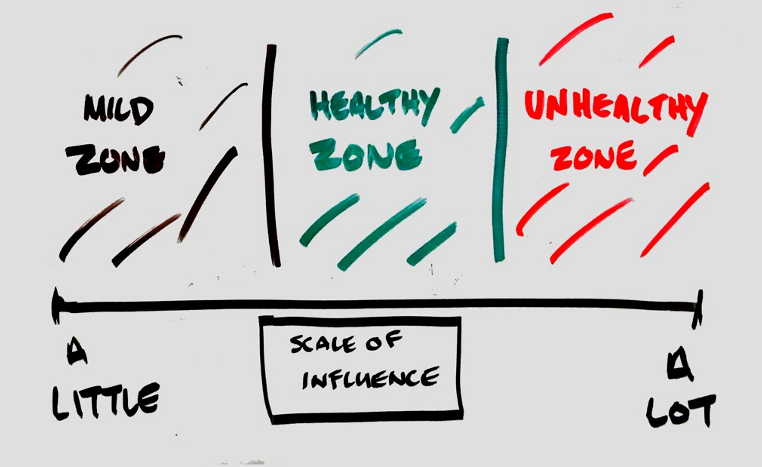Some businesses are successful, some are not, you can study what makes them different & find patterns.
Hamilton Hemler wrote the most complete book on strategy I’ve ever read. I’m simplifying his ideas here.
Strategy is used in two ways: 1. Strategy: the study of the basic things that make a business successful. 2. strategy: the overall approach a single business takes to be successful.
Your goal as a business is to make money for a long time. To do this you need to profitably keep your customers choosing your business over your competition. The best way to do this is to do things at the intersection of these 3 circles:
Great for customers, good/easy for you, bad/hard for your competitors – when you do things like this you create a competitive “moat” that protects your business & helps you make money for a long time.
There are only 7 ways to do this, they become available as your business grows from startup to stable:
| Stage Available: | Power or Moat | Eli5: | Hurts Comp by: | Example: |
| Startup | Counter Positioning | You do something that the other companies can’t without hurting their own businesses. | They can’t help customers in the same way without losing money. | Netflix let you rent all the movies you wanted at 1 low price. Blockbuster would go out of business if they did. |
| Startup | Cornered Resource | You have the only one of it(people, tech, etc) & it helps customers in a valuable way. | They can’t duplicate the way you help customers. | Pfizer having a patent on a helpful drug. |
| Growing | Network Economies | Your customers become a part of the reason people buy your solution. | The network is hard for them to build, especially when you have them already. | Everyone is already on Facebook & everyone being there is the reason customers sign up. |
| Growing | Switching Costs | It is a lot of work & effort to remove your product. | The removal of your product is a cost that customers have to “pay” to buy competitors. | Epic (the Electronic Medical Record) is the main way you run your business, you’d need to change everything to remove it. |
| Growing | Scale Economies | When you get bigger some things get cheaper & easier. | They can’t do what you do at the same scale. | Wal-mart offers lower prices because they buy & ship in bulk. |
| Stable | Branding | Your reputation is so strong that it is an important reason people buy and stay. | People don’t think of them as highly as they think of you so it is harder for them to sell and retain. | A Rolls Royce with the exact same quality as a Volvo could still charge & sell more. |
| Stable | Process Power | You spent so much time at something that you are significantly better at it than everyone else. | They can’t catch up even with years of practice. | Toyota was so good at producing vehicles that even though everyone copied them they stayed ahead. |
So what, how do I use this?
As with all simple & powerful principles the application has extremely wide use. Think about the following:
- if you are building within a company:
- What stage are you in?
- Can you clearly see how your company has one or more of these powers?
- If not, your ability to make money for a long time is very much at risk – how can you get your company there?
- If you are building your own company:
- Are you convincing yourself that you have one of these powers when you really don’t?
- Are your aspirations outside your stage? i.e. if you think you are winning on branding as a startup you are likely mistaken.
- Do you truly have a cornered resource or a counter position – this is the most powerful thing to track toward if you are going to spend effort on one thing.
- No matter where you are – go through this exercise:
- For the most relevant powers, ask the question: “How could I achieve [this power*] in my company”? *for each power. Force your mind to write down 20 answers.
Strategy is simple, exercising the thought to create it & then doing the work is the complicated part.

